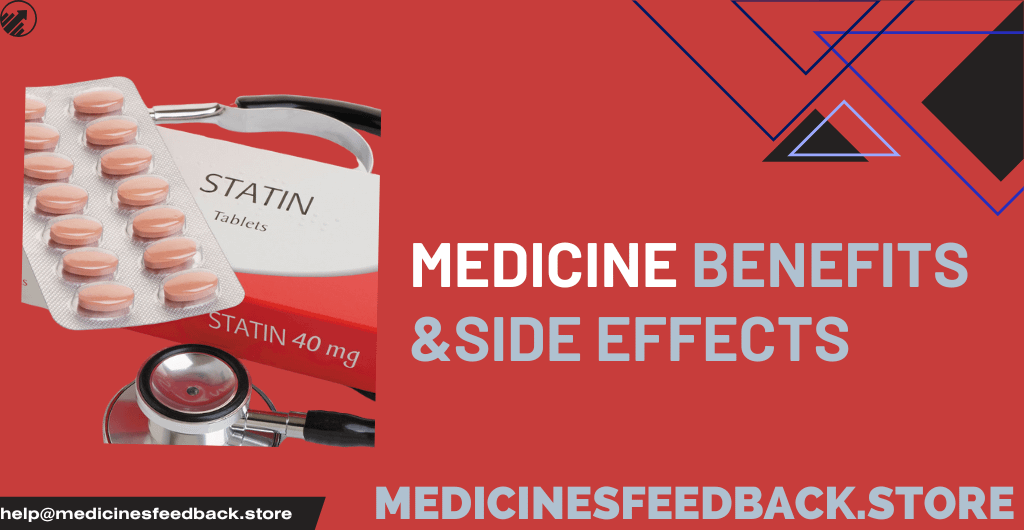One of the most often prescribed drugs for controlling elevated cholesterol is a statin. Since heart disease is one of the world’s top causes of death, statins are essential in lowering cardiovascular risks for millions of people. This thorough overview outlines the advantages, possible drawbacks, and crucial factors for anyone thinking about statin therapy.
What Are Statins?
A class of drugs known as statins functions by preventing the liver’s synthesis of a particular enzyme that produces cholesterol. Statins lower LDL (low-density lipoprotein), or “bad,” cholesterol levels, which helps keep cholesterol from accumulating in the arteries and lowers the risk of heart attacks and strokes. Rosuvastatin, simvastatin, and atorvastatin are common statin kinds.

How Do Statins Work?
The enzyme HMG-CoA reductase, which is essential for the liver’s capacity to generate cholesterol, is inhibited by statins. Statins reduce blood cholesterol levels by blocking this enzyme. This lowers total cholesterol levels by making the liver work harder to eliminate LDL cholesterol from the blood.
The Benefits of Statins
- Lowering LDL Cholesterol
Statins are highly effective at reducing LDL cholesterol, which is the primary contributor to artery plaque formation. Studies show that statins can lower LDL cholesterol by as much as 30-50%, depending on the specific type and dosage. - Reducing Heart Disease Risk
Statins have proven beneficial in lowering the risk of heart disease and related complications. They are often prescribed for individuals who have a history of cardiovascular disease or are at high risk due to factors like high cholesterol, high blood pressure, or diabetes. - Preventing Stroke
By keeping arteries clear of cholesterol blockages, statins also reduce the risk of ischemic strokes, which occur when blood flow to the brain is blocked. This preventive effect makes statins valuable for overall cardiovascular health. - Anti-Inflammatory Effects
Research suggests that statins may also provide anti-inflammatory benefits. Inflammation is a significant factor in atherosclerosis (plaque buildup), and by reducing inflammation, statins may further protect against cardiovascular diseases.
Who Should Take Statins?
Statins are generally recommended for individuals with specific risk factors, such as:
- A history of heart attack, stroke, or other cardiovascular events
- High LDL cholesterol levels (above 190 mg/dL)
- Diabetes, especially for those over age 40
- A family history of cardiovascular disease
Potential Side Effects of Statins
While statins are effective, they may cause side effects in some individuals. Here’s what to know about common and rare side effects:
- Muscle Pain and Weakness
Muscle pain is one of the most commonly reported side effects of statins. Some individuals may experience muscle aches, tenderness, or weakness, particularly in the legs. In rare cases, this can progress to a serious condition called rhabdomyolysis, which can damage muscle tissue. - Liver Damage
Statins can sometimes impact liver function, causing elevated liver enzymes. Though rare, this side effect is typically monitored by routine blood tests to ensure liver health. - Digestive Issues
Some people may experience digestive side effects like nausea, gas, or constipation. These symptoms often subside over time, but adjusting the dose may help if they persist. - Increased Blood Sugar Levels
Statins have been associated with slightly higher blood sugar levels, which may increase the risk of type 2 diabetes in some individuals, especially those already at risk. Regular monitoring can help manage this potential side effect. - Neurological Effects
Although rare, some users have reported memory loss or confusion while taking statins. These symptoms are typically reversible upon stopping the medication.
Weighing the Risks and Benefits of Statins
A healthcare professional should be consulted before beginning statin therapy. Especially for people with a high cardiovascular risk, the advantages of statins in preventing heart attacks and strokes frequently exceed the possible hazards. Nonetheless, a customized strategy that considers a person’s medical background, way of life, and preferences is crucial.
Alternatives to Statins
For those who cannot tolerate statins or prefer alternative treatments, other options include:
- Dietary Changes: Reducing saturated and trans fats, while increasing fiber intake, can naturally lower cholesterol.
- Exercise: Regular physical activity helps improve cholesterol levels and overall cardiovascular health.
- Other Medications: For some, alternatives like ezetimibe or PCSK9 inhibitors may be prescribed to lower cholesterol levels without the same side effects as statins.
Conclusion
Statins are an effective way to control cholesterol and avoid heart disease. People can choose wisely for their heart health by being aware of the advantages, possible drawbacks, and available options. To guarantee the best course of action for your medical needs, always get advice from a healthcare professional before beginning or ending statin therapy.




